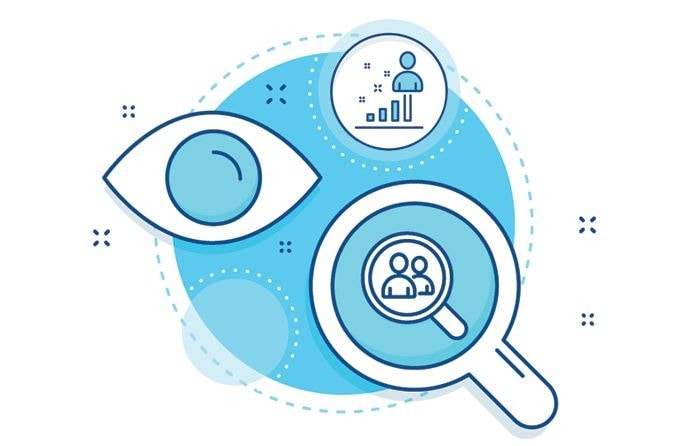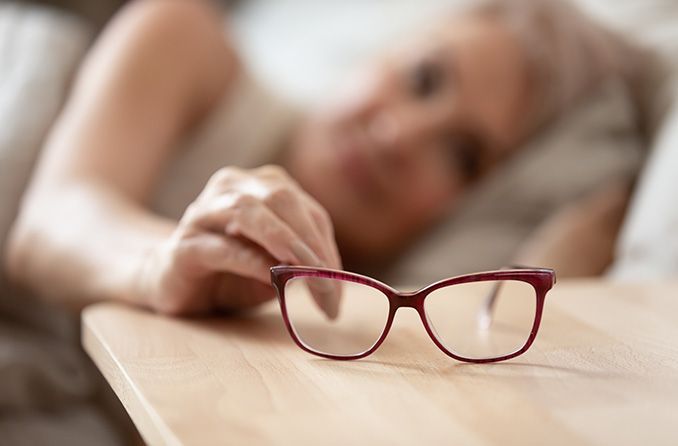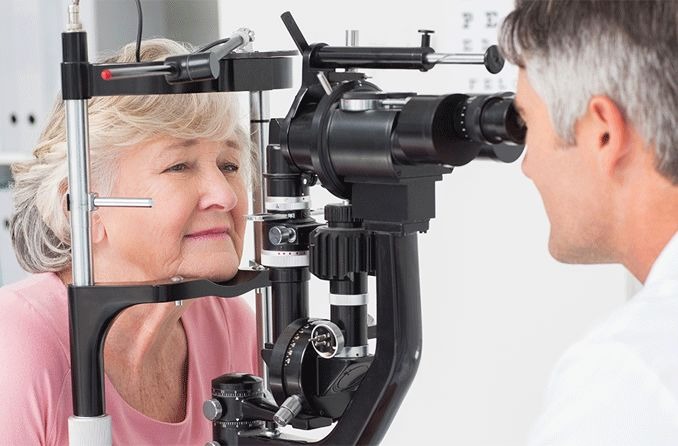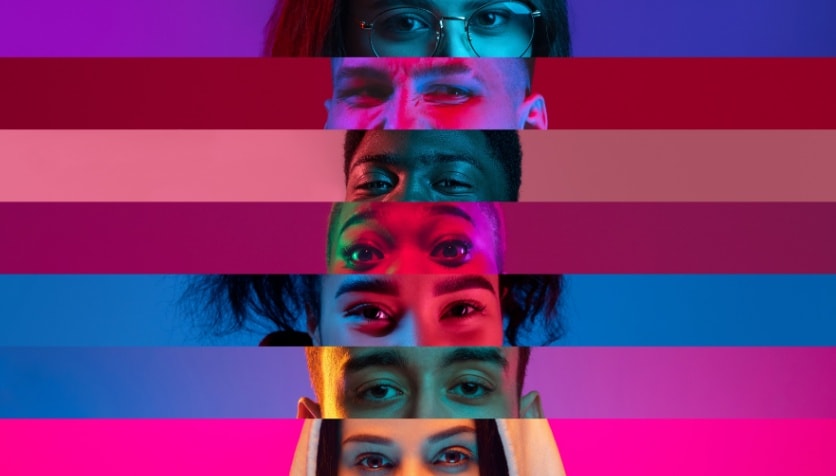All About Vision is dedicated to being an educational resource for our readers about all vision-related topics. We’ve compiled this list of eye health statistics from top health and vision organizations and publications to provide an overview of eye health challenges in the US and around the globe.
Eye Health Statistics
Page published on Monday, December 14, 2020
Page published on Monday, December 14, 2020

On this page:
Eye Disease in the US
Vision Impairment in the US
Eye Care in the US
Global Eye Health
On this page:
Eye Disease in the US
Vision Impairment in the US
Eye Care in the US
Global Eye Health
Eye Disease in the United States
- Cataracts currently affect more than 24.4 million Americans over age 40. (1)
- By age 75, nearly 50% of all Americans will have cataracts (1)
- Age-related macular degeneration (AMD) affects 2.1 million Americans over age 50. (2)
- One in 10 (10%) Americans will have AMD by the age of 80. (2)
- In 2019, 9.1 million Americans had AMD. (2)
- AMD is more common in women than in men. (2)
- Diabetic retinopathy affects 7.7 million Americans aged 40 and older. (3)
- Roughly 3.2 million American women over the age of 50 have dry eye syndrome. (4)
- An estimated 1.68 million American men aged 40 and older suffer from dry eye syndrome. (5)
- Nearly 1 million eye infections occur in the US each year that are severe enough to require a trip to an eye doctor or a hospital. A large majority of these are related to inappropriate use of contact lenses. (6)
Glaucoma in the United States
- Glaucoma affects an estimated 2.7 million Americans aged 40 or older. (7)
- Less than 11% of Americans are aware that there are no early warning signs of glaucoma. (8)
- Glaucoma is believed to cost the US government $1.5 billion annually in lost tax revenue, social security and medical expenses. (9)
- In 1991 and 1992, nearly 10 million doctor visits in the US were related to glaucoma. (10)
- An estimated 1 out of 10,000 babies born in the US has glaucoma at birth. (11)
- One in 10 (10%) people with glaucoma who receive proper treatment will still experience vision loss. (11)
- It is believed that only half of the 3 million Americans with glaucoma know they have the disease. (11)
- Glaucoma accounts for approximately 9% to 12% of blindness in the US, with roughly 120,000 residents blinded by the disease. (11)
- Glaucoma is the second leading cause of blindness in African-Americans. (12)
- African-Americans are 15 times more likely to be blinded by glaucoma than Caucasians in the US. (13)
- Nearly 40% of US residents surveyed do not receive dilated eye exams, the most accurate way to detect glaucoma. (11)
Vision Impairment in the United States
- Over 90 million Americans are considered high risk for vision loss or impairment. (8)
- Only 50% of Americans considered high risk for vision loss have visited an eye doctor in the past 12 months. (8)
- Vision problems in Americans aged 40 and over is estimated to have an annual economic impact of more than $145 billion. (8)
- At least 2.9 million Americans aged 40 and over have low vision, which means their best corrected vision (BCV) is 20/40 or worse, excluding those who are blind. (14)
- Approximately 4.2 million Americans aged 40 and over are considered visually impaired, meaning that their BCV in their better seeing eye is 20/40 or worse, including those with low vision and those who are legally blind. (15)
- One in 12 (8%) men in the US with Northern European ancestry have red-green color blindness, the most common form of color blindness, which makes it hard to see the difference between red and green. (16)
- One in 200 (0.5%) women in the US with Northern European ancestry have red-green color blindness. (16)
- One in 10,000 (0.010%) people in the US have blue-yellow color blindness. (16)
Blindness in the United States
- Approximately 1.3 million people in the US are considered legally blind, meaning their visual acuity is worse than 20/200 in their best seeing eye. (17)
- By 2050, the number of legally blind people in the US is expected to grow to approximately 2.176 million. (8)
- The CDC estimates that 90% of diabetes-related blindness in the US is preventable. (8)
Refractive Errors in the United States
- More than 34 million Americans aged 40 or older (23.9%) are myopic (nearsighted). (18)
- Approximately 14.2 million Americans aged 40 or older (8.4%) are hyperopic (farsighted). (19)
- Approximately 1 in 3 Americans have an astigmatism. (20)
- More than 150 million Americans use corrective eyewear due to refractive errors. (21)
- Americans spend roughly $15 billion annually on eyewear such as eyeglasses. (21)
- Approximately 800,000 surgical procedures to correct refractive errors (such as LASIK and PRK) were performed in the US in 2010. (22)
Eye Injuries in the United States
- Approximately 2.4 million eye injuries occur every year in the US. (23)
- Use of protective eyewear is estimated to prevent 90% of eye injuries. (23)
- The largest volume of eye injuries occur in the 18-45 age group (35%). (24)
- Accidents involving common household objects cause 125,000 eye injuries every year. (25)
- According to the National Institute for Occupational Safety and Health (NIOSH), an estimated 2,000 plus people suffer eye injuries at work every day in the US. (8)
- Approximately 10% to 20% of work-related eye injuries will result in temporary or permanent vision loss. (26)
Eye Care in the United States
- According to the Health Resources & Services Administration, there were approximately 19,063 active ophthalmologists in the US in 2019-2020. (27)
- There were approximately 41,000 optometrists in the US in 2014, with a projected increase to 46,000 in 2020. (28)
Global Eye Health Statistics
- According to the World Health Organization (WHO), more than 2.2 billion people worldwide suffer from vision loss or blindness. (29)
- The most common cause of moderate to severe vision impairment (MSVI) globally is undercorrected refractive errors (UREs), which impact over 1 billion people worldwide. (29)
- The nations of Sub-Saharan Africa have the highest incidence of glaucoma in the world, while South Asia has the lowest*. (30)
- South Asia has the highest incidence of URE in the world, while Sub-Saharan Africa has the lowest*. (30)
- Latin America and the Caribbean have the highest incidence of diabetic retinopathy in the world, while South Asia has the lowest*. (30)
- Southeast Asia, East Asia and Oceania have the highest incidence of cataracts in the world, while Central and Eastern Europe and Central Asia have the lowest*. (30)
- North Africa, the Middle East and the high-income regions of North America, Western Europe, Asia-Pacific, Australasia and Southern Latin America have the highest incidence of AMD in the world, while Central and Eastern Europe and Central Asia have the lowest*. (30)
*In people aged 50 and older
READ NEXT: Vision and Eye Health Awareness Calendar
On this page:
Eye Disease in the US
Vision Impairment in the US
Eye Care in the US
Global Eye Health
On this page:
Eye Disease in the US
Vision Impairment in the US
Eye Care in the US
Global Eye Health
More Articles









